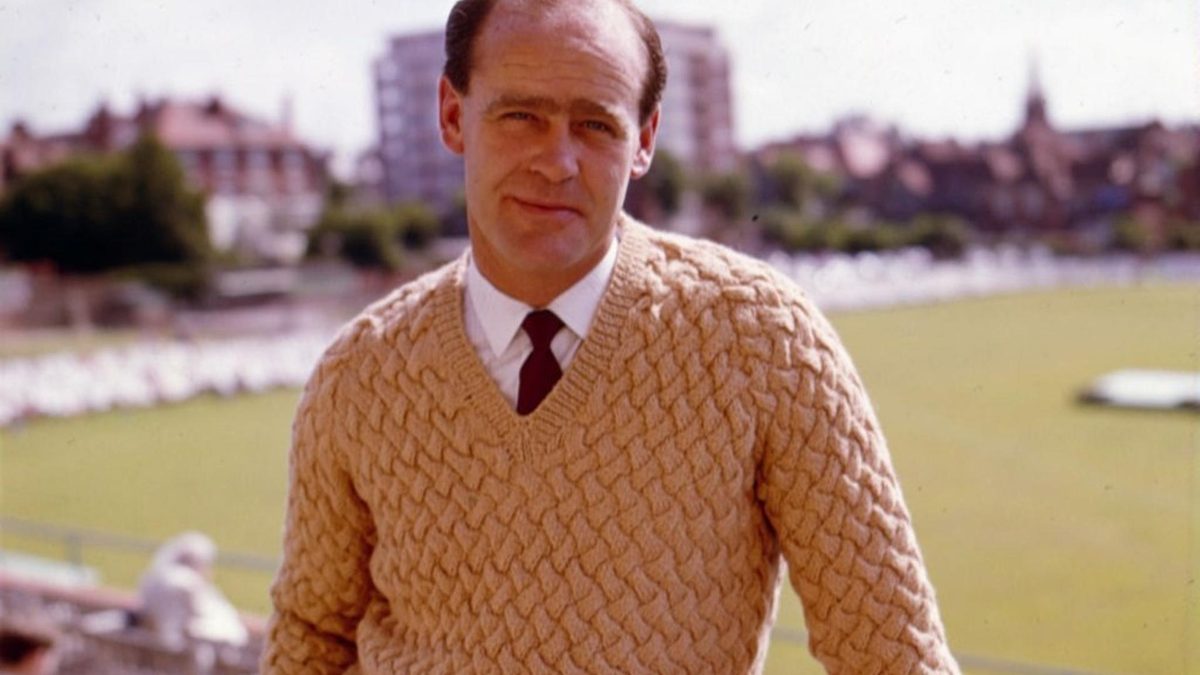
Brian Close, who died on September 14th 2015, had a long and storied career for Yorkshire, Somerset and England. The Wisden Cricketers’ Almanack captured a remarkable life with this obituary in 2016.
Read more from the Wisden Cricketers’ Almanack archive
Brian Close was one of the most colourful and enduring characters in English cricket. His fame extended to featuring in an Eric Morecambe one-liner, yet he achieved recognition without coming near to fulfilling the potential that in 1949 had made him, aged 18, England’s youngest player. Close played in 22 Tests over 27 years (and four decades) with only modest results – but he was proof that some cricketers are far more than the sum of their statistics.
At times his ability as an all-rounder, his outstanding record as a captain, and the store of anecdotes he inspired, were lost amid awestruck admiration for his courage against fast bowling or in the field, close to the bat. It was his reckless bravery that inspired Morecambe’s joke about the return of summer being signalled by “the sound of leather on Brian Close”. When he died, the wince-inducing footage of his encounter with the West Indies pace attack at Old Trafford in 1976 was shown so frequently it was easy to overlook the fact that he led Yorkshire to four County Championships, had a successful spell as England captain, and enjoyed a late-career renaissance at Somerset as a growling but kindly mentor to Ian Botham and Viv Richards.
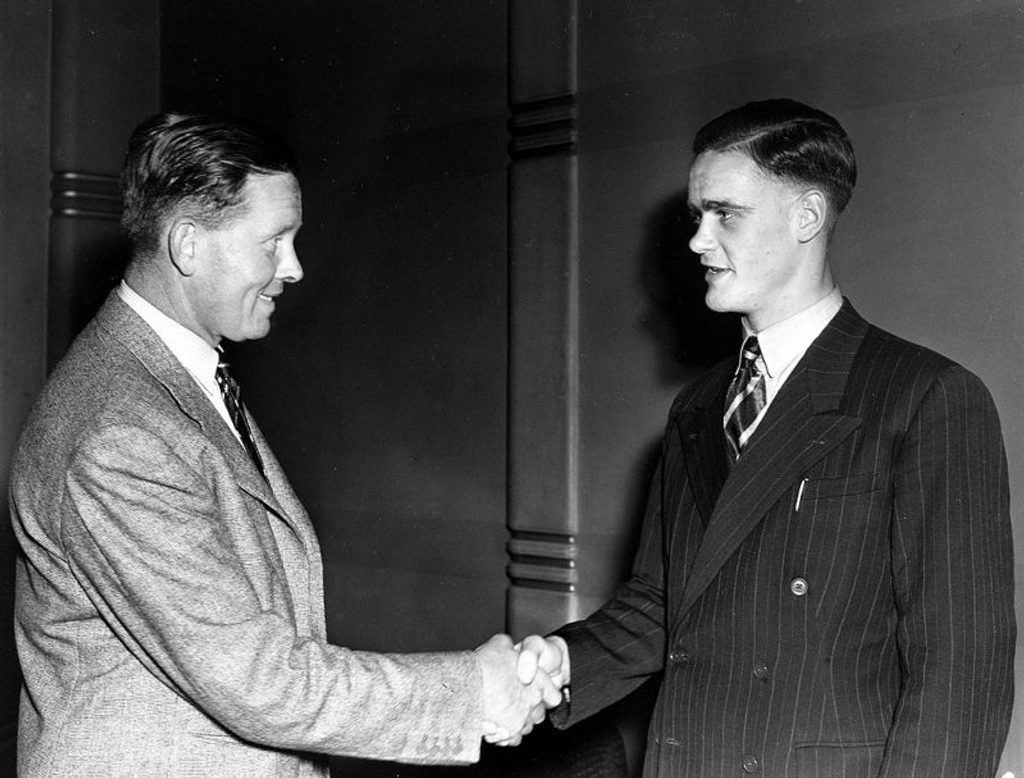 4th August 1949: England’s youngest ever Test cricketer then, Brian Close (right) shakes hands with his captain Freddie Brown
4th August 1949: England’s youngest ever Test cricketer then, Brian Close (right) shakes hands with his captain Freddie Brown
Close had the bravado to walk down the pitch to Wes Hall and Charlie Griffith at Lord’s in 1963 but, while these exploits burnished his reputation, they disguised a sensitive man who was wounded by his setbacks. His friend Ray Illingworth believed his callous treatment by senior pros on the 1950-51 Ashes tour left scars that took years to heal.
Likewise, the recollection of his brutal sacking as Yorkshire captain in 1970 could bring him to the point of tears nearly 40 years later. And he always maintained that his removal from the England captaincy in 1967 was part of an Establishment plot to get rid of an outspoken northerner. As Yorkshire team-mate Richard Hutton said: “He had difficulty at times keeping quiet. He did not do himself many favours.”
Close was born in Rawdon, near Leeds, and was in the local club’s first team at the age of 11. He was a bright schoolboy with a gift for maths, but his sporting talent led him towards football with Leeds United – and cricket. In 1949 he made his Yorkshire debut, along with Fred Trueman and Frank Lowson, at Fenner’s (Wisden referred to Trueman as “a spin bowler”). The Championship was shared with Middlesex that summer, and Close – a hard-hitting left-hander in the middle order and a swing or off-spin bowler – became the youngest player to complete the double. He was called up for a Test debut against New Zealand and, although he made an inauspicious start, his potential was such that sensible notions of letting him mature in county cricket were ignored.
National service meant he missed most of the following season, but Signalman Close was granted extended leave of absence after he was selected to go to Australia in 1950-51. By his own admission, Close was “a naive young lad”, and the experienced players who might have harnessed his teenage exuberance were aloof and unhelpful. “Some thought Close a trifle swollen-headed,” wrote E. M. Wellings in his tour book No Ashes for England. He started with a century and four wickets against Western Australia at the WACA, but was troubled by injuries. Captain Freddie Brown persuaded him to play in the second Test at Melbourne but, with a groin heavily strapped, he scored nought and one, having returned to dressing-room silence after a rash shot in the first innings. The Australians noted his distress, and Ian Johnson urged Brown to offer him some help. “Let the bugger stew,” said Brown, who even confiscated his golf clubs.
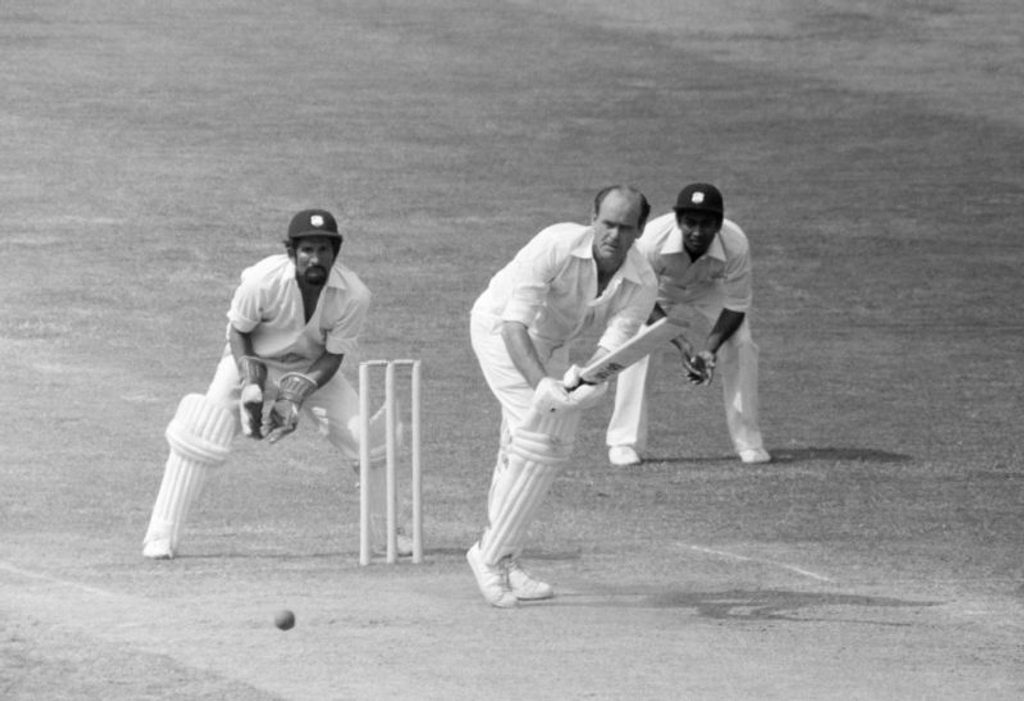 Close batting for England during the 1st Test match between England and West Indies at Trent Bridge, Nottingham, 1976.
Close batting for England during the 1st Test match between England and West Indies at Trent Bridge, Nottingham, 1976.
“He came back from that tour a very different person, and that went on for a long time,” said Illingworth, who noted the lack of swagger in his batting. “Before then, he always wanted to bat. It was always, ‘I’ll murder this bowler when I get in.’” Close completed his national service and did the double again in 1952, but missed most of the following summer because of a serious knee injury sustained while turning out for Bradford City (he did not make the first team at Leeds nor, subsequently, Arsenal). It ended his football career, but proved a blessing for cricket. In 1955, he was playing well enough to be called up for the Fifth Test against South Africa at The Oval, where he opened the batting. By the late 1950s, Close had become the senior professional at Yorkshire and regained much of his youthful ebullience.
They were champions three times in four years and, when Vic Wilson retired as captain in 1962, Close took over. He proved an instant success, handling players shrewdly, leading aggressively and forming an unmatched tactical alliance with Illingworth. “Closey was a great man-manager,” said the fast bowler Mel Ryan (who died two months after Close). “He was a dominant character. Even Fred Trueman was frightened of him, and he got the best out of people.” And part of that was his willingness to field at short leg even when captain.
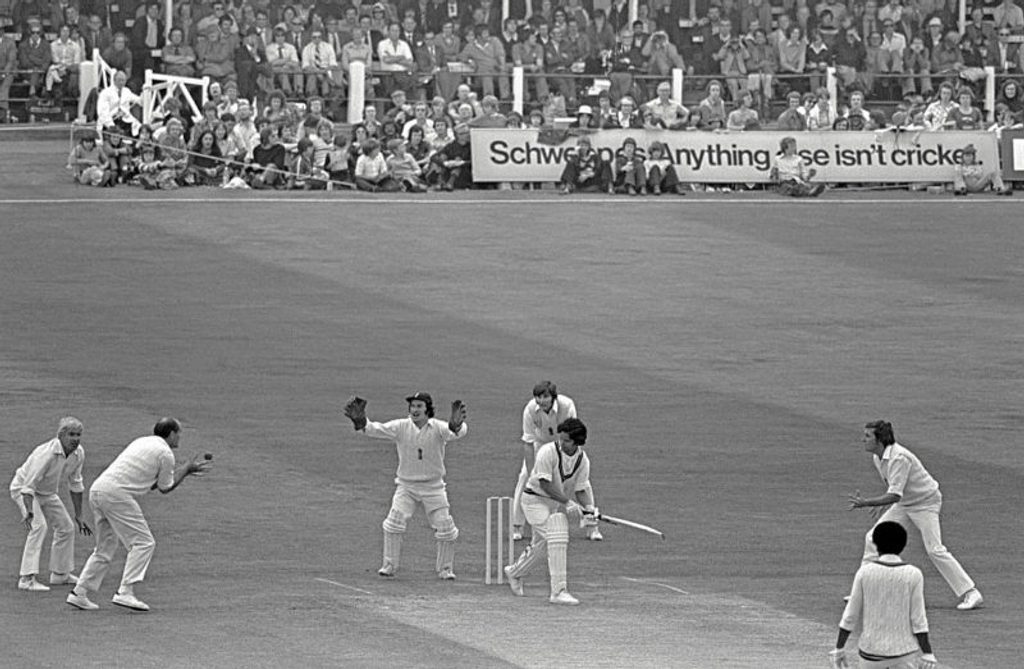 Brian Close was an iconic short-leg fielder
Brian Close was an iconic short-leg fielder
But his Test career remained a thing of fits and starts, and looked to have been dealt a mortal blow on the climactic afternoon of the Old Trafford Ashes Test in 1961, when England’s run-chase subsided as Richie Benaud began to bowl round the wicket into the rough. Close came in at 150 for three and, characteristically, felt their best chance lay in continuing to pursue a target of 256. He also reckoned that, as a left-hander, he was better equipped to take on Benaud. But, after driving him for six, he was caught playing a big sweep. The press excoriated him, John Woodcock writing in The Times that “he swung wildly at his first ball and continued to play as if out of his cricketing senses”.
He returned against West Indies two years later, playing his only full five-match series and making 315 runs at 31. Amid the drama of the final afternoon in the Second Test at Lord’s, he struck a belligerent 70, his highest – and best – Test innings. He frequently walked down the pitch, and he was struck several times. Next day, photographs of his bruised torso decorated back pages. With Yorkshire winning the Championship, it was the high point of his career, and he was named a Wisden Cricketer of the Year.
A hat-trick of Championships followed from 1966, and the Gillette Cup was won in 1965 and 1969. Close led by unselfish example, moving up and down the order, or switching between off-spin and his now gentle seamers to suit the situation. “He did not have great personal ambition,” said Hutton. “He would say that everything he was doing was for Yorkshire.” In the field his exploits became legendary, and his brooding presence, intimidatingly close at short leg, induced anxiety in batsmen.
Close explained: “I used to get down with my legs half-bent, my upper body always horizontal and my head stuck out in front. The only places they could hit me point blank were my legs, my shoulders and my head.” And he was hit often, but was only interested in whether a team-mate had caught the rebound. The one time his colleagues recalled him admitting to pain was when he came in contact with a boiled kettle while walking naked around the dressing-room.
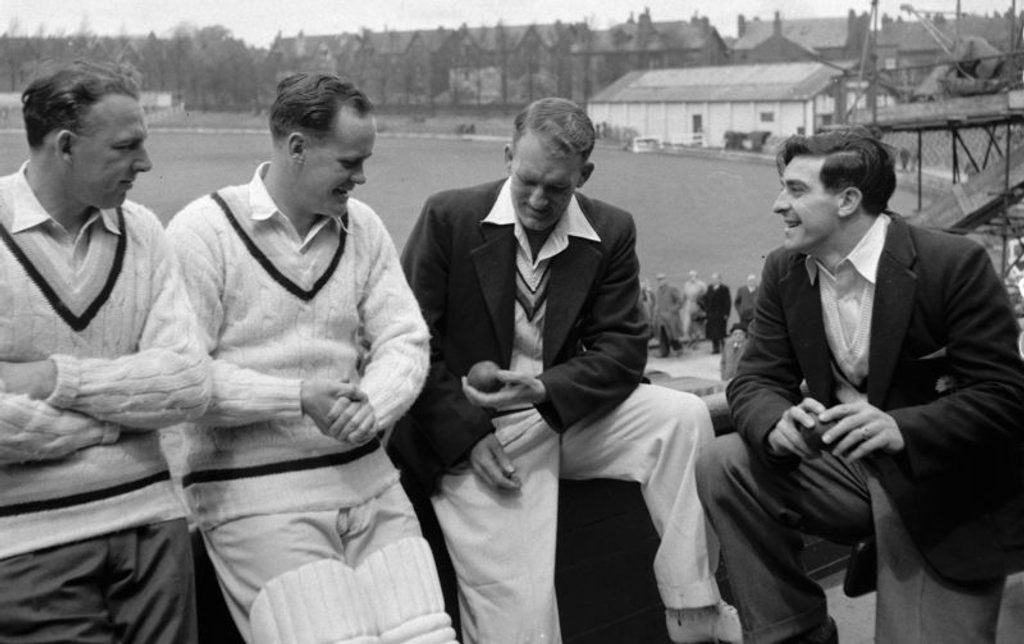 Silence is golden – Brian Close second from left, would often banish Trueman right to fine-leg, much to the dismay of the bowler
Silence is golden – Brian Close second from left, would often banish Trueman right to fine-leg, much to the dismay of the bowler
In August 1966, with England 3-0 down against West Indies, the 35-year-old Close was summoned to replace Colin Cowdrey as captain for the final Test, at The Oval. Time had not dimmed his self-belief. Doug Insole, the chairman of selectors, recalled: “The first selection meeting after he became captain was in Leicester on a Sunday. We quickly picked nine players and I said, ‘Let’s stop for a minute and see what we’ve got and where the gaps are. What about openers?’ Closey said, ‘Well, at Yorkshire we have Boycott and Ken Taylor, but if we need quick runs I go in first because I can see the ball better than either of them.’ I said, ‘OK. Do we need a second spinner?’ Closey said, ‘Well, we have Don Wilson and Ray Illingworth, but if the ball is really turning I go on because I turn it more than those two.’ I said, ‘OK then, what about seam bowlers?’ Closey said, ‘At Yorkshire we have Fred and Tony Nicholson, but if it’s really swinging I bowl because I can swing it more than either of them.’ So I said, ‘Well then, doesn’t look like we need to bother with the other two players.’”
England won by an innings, and Close enhanced his reputation for innovative thinking by instructing John Snow to bowl Garry Sobers a first-ball bouncer in West Indies’ second innings, calculating that he would not be able to resist the hook. Sobers’ mistimed stroke lobbed into the hands of a jubilant Close, still upright at short leg. The following summer, England went undefeated against India and Pakistan, but Close had a sense of foreboding when Crawford White of the Daily Express warned him to stay out of trouble because MCC were “looking for any excuse” not to select him as captain for the tour of the Caribbean.
Instead, Close walked into a full-blown row when, on the final afternoon of a Championship match at Edgbaston, he was accused of adopting time-wasting tactics to stop Warwickshire winning. The fate of the England captain became front-page news, and Close faced an MCC disciplinary panel on the day before the final Test against Pakistan.
The decision was delayed until after the match, but MCC ruled he would not be asked to lead the team in the West Indies. Insole recalled: “I said to him, ‘Closey, all you have to do is say sorry and you can carry on as captain,’ but before the panel he said he had done it to prevent Yorkshire losing the game and would do so again. One of the panel said, ‘If he does that in the West Indies we will have a riot.’”
At Yorkshire, the departure of Illingworth and retirement of Trueman made the team less formidable. The committee were keen to introduce new blood, but the captain did not share their enthusiasm for the club’s emerging players. “Brian’s great quality was that he was very loyal to the players who were tried and tested, but this brought about his downfall,” said Hutton. In November 1970 he was summoned to a meeting with Brian Sellers, chairman of the cricket committee, and given the option of resigning or being sacked. Deep in shock, Close was sick by the side of the road as he drove away from Headingley. Initially he chose to resign, but quickly changed his mind. He was devastated.
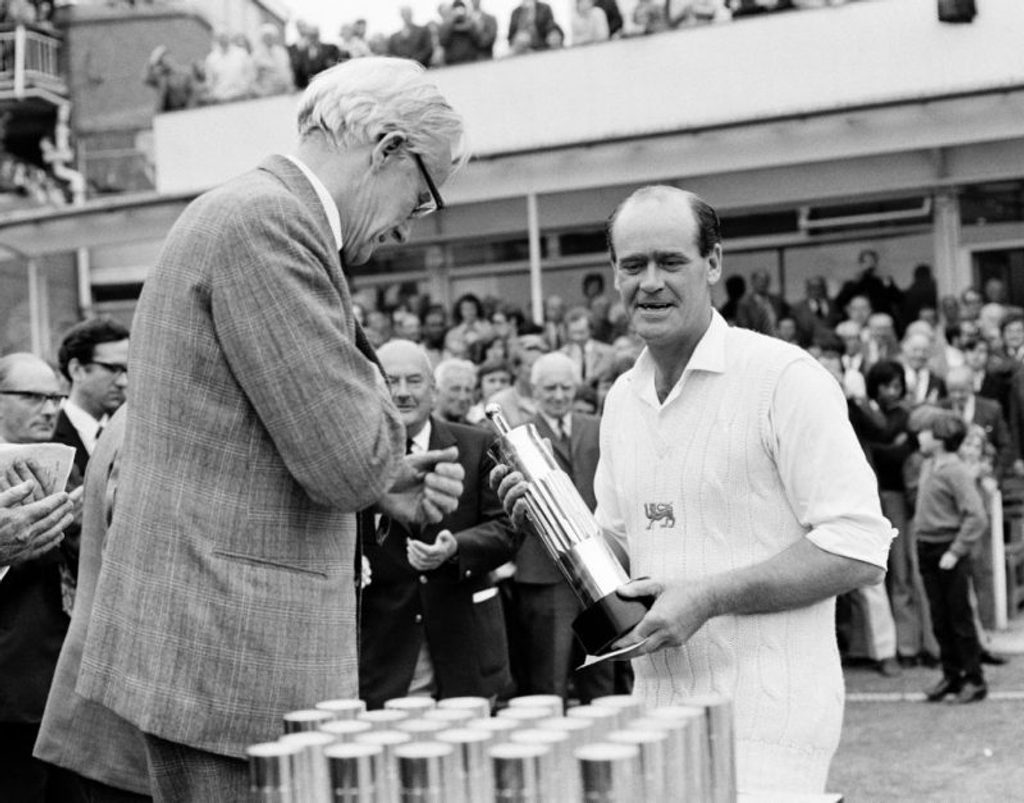 Brian Close is presented with the series trophy after England won the the 3rd Prudential Trophy ODI against Australia by two wickets, taking the series 2-1, at Edgbaston, Birmingham, 28th August 1972.
Brian Close is presented with the series trophy after England won the the 3rd Prudential Trophy ODI against Australia by two wickets, taking the series 2-1, at Edgbaston, Birmingham, 28th August 1972.
At Harrogate several years later, he encountered Sellers, who told him: “I can honestly say that sacking you was the biggest mistake of my life.” He chose Taunton over higher-profile destinations and made five centuries – including one when Yorkshire came visiting – in his first season with Somerset. He had no captaincy ambitions, but was persuaded to take over from Brian Langford in 1972. At the end of the summer, with Illingworth injured. Close was asked to lead England against Australia in the post-Ashes one-day matches, the first on English soil, winning 2-1.
At Somerset, an exciting generation were emerging – Vic Marks, Brian Rose and Peter Roebuck, as well as Botham and Richards – and Close and the veteran seamer Tom Cartwright proved the perfect mentors. He was, said Marks, “selfless, generous, hilariously funny (although he did not always appreciate why), a wee bit mad and awesomely brave”.
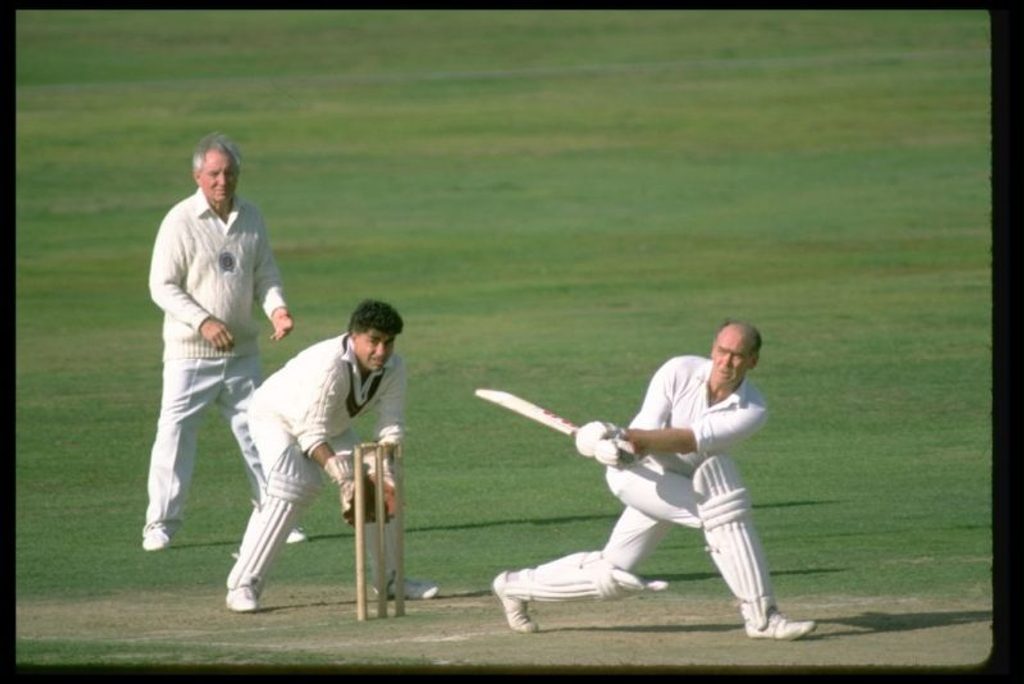 Brian Close batting for Old England against the Old World at the Oval in London in September 1983.
Brian Close batting for Old England against the Old World at the Oval in London in September 1983.
There were as many stories about his driving as his cricket. He would study form in the Sporting Life in the fast lane of a motorway, or ask his passenger to lean over and take over the steering while he poured a mug of tea. Cartwright recalled going into Taunton one morning to see Close’s car perched on top of a hedge; he had been leaning across to grab a portable radio while negotiating a bend. His career had one more improbable twist. In 1976, Tony Greig was looking to stiffen England’s spine for the series against West Indies and, aged 45, Close was recalled. “It’s the first year I haven’t put the Test dates in my diary,” he said. He did well in the middle order at Trent Bridge and Lord’s, but at Old Trafford was asked to open with John Edrich, aged 39. On the Saturday evening they were caught in one of Test cricket’s most notorious passages of play, as Andy Roberts, Wayne Daniel and Michael Holding bowled with unrelenting hostility on a cracked pitch. Close took several blows on the body, buckled at least once, but refused to show any pain. Richards, his Somerset protege, was fielding close to the bat. “Are you OK, skipper?” he asked, only to be told to “fuck off”. Somehow the pair survived for 80 minutes. Close was one not out.
He did not play for England again, and retired at the end of the following season. Only Wilfred Rhodes had a longer Test career span than his 27 years, and in first-class cricket his total of 813 catches is bettered by just four men. Yet a wistfulness lingered. “Of all the players who were around at that time, his career was the most disappointing,” said Insole, who had captained Cambridge on Close’s Yorkshire debut. “He had more ability in every aspect of the game.”
Close, Dennis Brian, CBE, died on September 14, 2015, aged 84.








